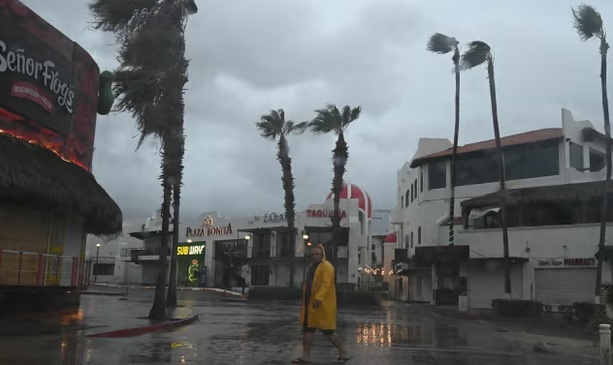In recent times, the weather patterns across the globe have been more unpredictable than ever. While most associate hurricanes with the Atlantic coast, California is not immune to the potential devastation they can bring. The recent warning about Hurricane Hilary has sent shockwaves through the state, signaling a new era of preparedness and resilience. In this article, we delve into the implications of this warning and how it highlights the need for California to brace itself for the impact of such natural disasters.
The Unprecedented Nature of Hurricane Hilary
Hurricane Hilary, a name that conjures images of tranquility, has paradoxically brought turmoil and unease. Historically, California has been spared the full force of hurricanes due to its unique climate and geographical location. However, the changing climate patterns have shattered this notion of immunity. Hurricane Hilary’s emergence and the subsequent warning have prompted experts to reevaluate their understanding of the state’s vulnerability.
Climate Change and its Role
Climate change has been a central player in altering the traditional weather dynamics of California. Rising sea temperatures and atmospheric changes have given rise to unpredictable storms that were once considered unlikely to occur in the region. The frequency of extreme weather events has surged, and Hurricane Hilary serves as a stern reminder that the state must be prepared for the unexpected.
Strengthening Infrastructure
The warning about Hurricane Hilary underscores the pressing need for California to strengthen its infrastructure against potential natural disasters. Building codes, particularly in coastal areas, must be revisited and updated to withstand the impact of powerful storms. Retrofitting buildings, improving drainage systems, and reinforcing critical utilities are paramount to ensuring the safety of residents and minimizing the aftermath of such events.
Evacuation Plans and Emergency Response
In light of the evolving threat posed by hurricanes, the development of robust evacuation plans and efficient emergency response systems is of utmost importance. The lessons learned from previous disasters, such as wildfires and earthquakes, can be invaluable in formulating strategies to mitigate the effects of hurricanes. Timely and organized evacuations, coupled with effective communication channels, can significantly reduce the loss of life and property.
Collaborative Efforts and Community Engagement
Addressing the challenges posed by Hurricane Hilary necessitates a collaborative effort between various stakeholders. Government agencies, local communities, non-profit organizations, and research institutions must join forces to devise comprehensive strategies. Moreover, engaging with the public through awareness campaigns, workshops, and educational programs can empower individuals to take proactive measures to protect themselves and their surroundings.
Learning from Other Regions
California can draw valuable insights from other hurricane-prone regions that have effectively managed and adapted to the threat. States along the Gulf of Mexico and the Atlantic coast have accumulated years of experience in dealing with hurricanes. By studying their approaches to preparedness, response, and recovery, California can incorporate best practices into its own strategies.
Investing in Technology and Research
Technological advancements in meteorology and disaster forecasting offer a ray of hope in the battle against hurricanes. Supercomputers, satellite data, and advanced modeling techniques can provide more accurate predictions, enabling authorities to issue timely warnings. By investing in research and innovation, California can harness these tools to enhance its preparedness and minimize the impact of hurricanes.
The warning about Hurricane Hilary serves as a pivotal moment for California to recognize the evolving threats posed by changing climate patterns. The state’s unique vulnerability to hurricanes demands a proactive approach, involving a combination of infrastructure development, collaborative efforts, community engagement, and technological advancements. By learning from past experiences and embracing innovative solutions, California can usher in a new era of resilience and preparedness in the face of natural disasters.
